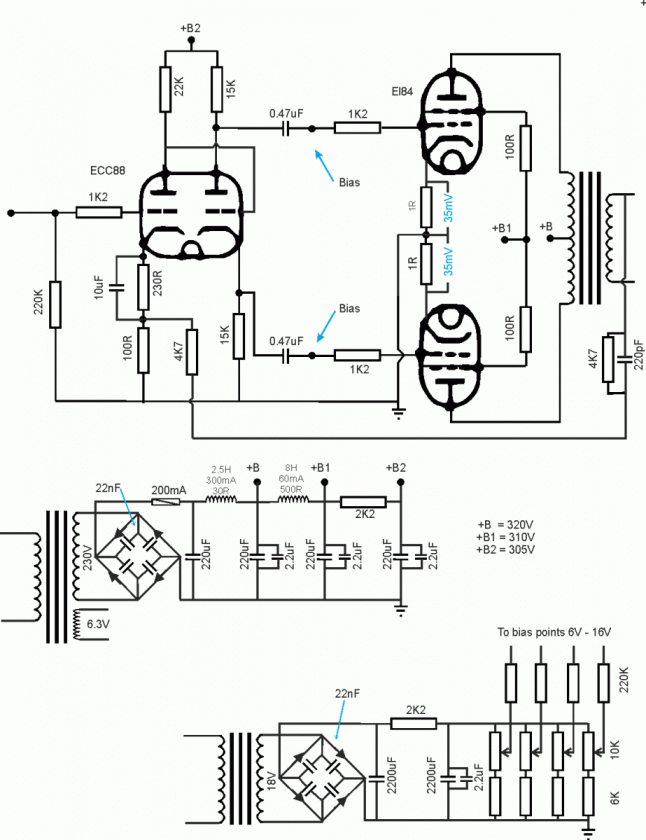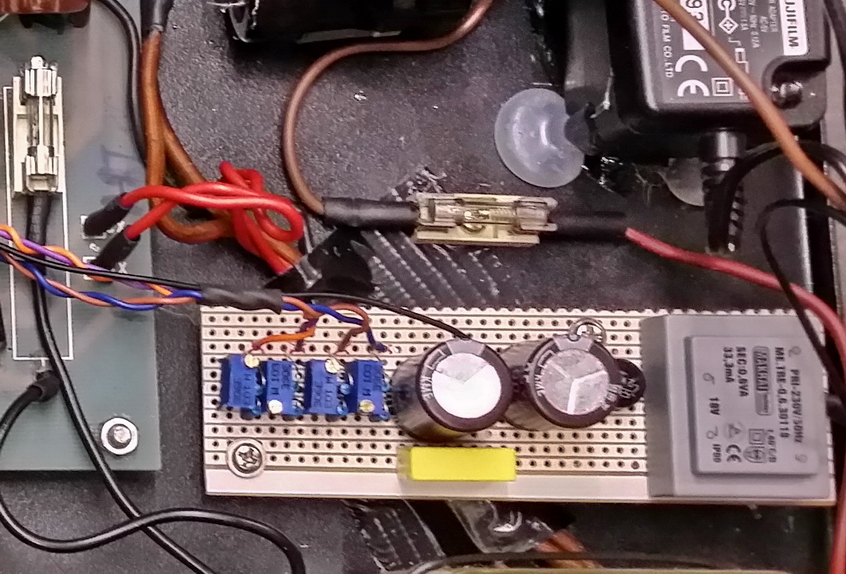I picked up an aging Edison 12 from ebay, and repairing it, modifying it, has been a little pastime of mine.
I did various mods. to it, as I read posts and articles here and there.
I have finaly settled on this:
pdf :
www.computer-surgery.net/ebay/new_edison.pdf
The circuit is nothing unusual.
My aim was to keep the signal path as clean as I could.
1- Reduce capacitors in signal path ( I am down to three)
2- Keep design to class A or almost! ( could not avoid the pentodes)
3- Get max. clean power out.
4- Keep stress down on output, to increase reliability and long life.
5- Keep noise to a minimum.
Good star-earthing is a must. What the circuit does not show (minor) is the fact that I used clean DC for heaters of input/driver tubes. EL84's use AC.
Twisted wire was used for heater supplies.
I had two leftover 10uF MKP's from an upgrade on crossover circuits of my Sonus Faber (i.e. quality MKP's) which I used to bypass the 230R on input tubes. The two 0.47uF's are Russian K40Y-9 paper-in-oil (about £2 each).
All 2.2uF bypass capacitors in powersupplies are quality polyP's.
Rectifier diodes in powersupplies have snubbing caps - two chokes (picked up from ebay for £15 for both ) are used with plenty of smoothing caps.
Bias is measured across 1R's on cathodes of EL84's , set at nominal 35mA, using individual multi-turn pots for each tube ( matched tubes are not needed), since I had no additional supply for bias, I used a tiny 0.6VA transformer and made the bias section on a tiny board.

Overall, the cost was very low, but it took a few days an hour here and there.
But it was all worth it, amp sounds great through my bookshelf (4 Ohm) Sonus Faber Concertino Domus.
Bandwidth is from about 10Hz to about +40KHz.
Amp clips at about 14W or so, but listening to it, you think it's a power-house, listening to 4th movement of Scheherzade recording on RCA label ( Chicago Symphony orchestra Freitz Reiner conducting ) which is as dynamic as you'll ever get (more than Led Zeppelin) , the amp will not run out of steam.
Noise is limited to a pure 50HZ (i.e. no buzzing) and you only hear it if you put your ear to about an inch of the bass drivers!